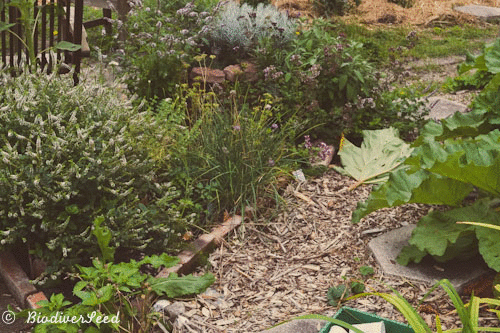
Woven wattle fences are found in archaeological evidence in Neolithic settlements: If our ancestors from over 10,000 years ago could figure out this simple technique, it should be a no-brainer for the average urban farmer.
Basically, a wattle panel is composed of sturdy posts driven vertically into the soil with pliable young shoots woven horizontally in between. Wattle panels can be used to make fences, trellises, raised beds, retaining walls for terraced gardens, and (I’m sure) many more garden accoutrements. Ideally, these woven limbs come from a supple—not brittle—rapidly growing wood. A number of trees send out shoots appropriate for making wattle fences, but I’ve found that I enjoy working with hazelnut, willow or dogwood.
Wattle fencing can be 100 percent free if you’re smart about it. I keep my prunings every year from trees like the Chinese contorted willow (Salix xmatsudana ‘Tortusa’) and use them to expand on ongoing projects. A technique called coppicing, where young wood is continuously harvested from living trees on a sustainable rotation, provides a constant source of free building material for wattle projects. Further, branches can be sustainably harvested from the wild if you’re short on coppicing materials in your own yard.
As with most skills, practice makes perfect. My first wattle projects were positively rudimentary, but I find that as I work more with this technique, my results are more and more aesthetically pleasing. Even the most basic wattle panel gives a rustic, cottage-like appeal to any garden. There’s also a certain sense of pride that comes in building a garden structure from scratch with completely raw materials.
In any case, the price can’t be beat! Making fences, retaining walls, trellises and raised beds from scratch is a way to do more in your garden for less.




